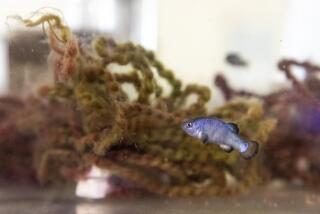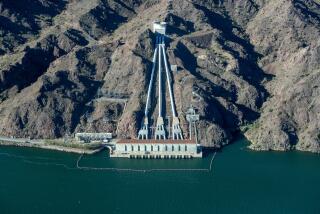Let’s Leave a Trickle for Birds Without Borders
If you want to know what’s wrong with the Colorado River, visit Cucapá el Mayor in Mexico, 40 miles below the border.
A century ago, the Cucapá Indians could get in their boats to fish and travel to a vast and bountiful estuary where the Colorado River meets the Sea of Cortez. Naturalist Aldo Leopold, who explored the area in 1922, wrote that here the river “was nowhere and everywhere, for [we] could not decide which of a hundred green lagoons offered the most pleasant, speedy path to the gulf.”
Today the Cucapá have to drive their boats an hour south to reach the estuary, and they no longer find the 300-pound totoaba, a steel-blue fish, or the abundance of waterfowl, heron, kingfisher, pelican and osprey that once inhabited the delta.
Part of what happened was just bad luck. Southwest states carved up the river’s water toward the end of a very wet decade. Unfortunately, those wet years were more like a stock market boom than the natural order of things.
A deal that seemed reasonable at the time, and had even budgeted water for Mexico, has since gone sour without enough water to go around. The Everglades of the Southwest mostly disappeared.
But nature can be surprisingly resilient. Eons of mineral deposits make for extraordinarily rich soil throughout the delta, and even a little water brings the land to life. Over the last few decades, runoff from nearby farms inadvertently re-created Mexico’s Ciénega de Santa Clara wetland. Though tiny compared with the vast green lagoons that Leopold witnessed, the Ciénega is a lifeline for hundreds of thousands of migratory birds as they travel from Mexico and points south to their summer grounds from California to Alaska. The Pacific Flyway bottlenecks in the desert. Without the Ciénega, we could be in for a truly silent spring.
Mexico has protected a significant part of the delta by classifying it as a United Nations Biosphere Reserve, but that doesn’t guarantee that wetlands get the one thing they need most: water. The best available science suggests that a mere 1% of the Colorado’s flow would ensure that these lagoons are there for the birds that rely on them.
Conservation groups on both sides of the border are already working together to restore the river, but we need Washington to coax more water conservation from the people of the American Southwest. And we need Mexico City to assure that the water it gains flows into the wetlands.
The river, the delta and the wildlife know nothing of borders. Americans and Mexicans can’t afford to let the Colorado River become an afterthought just because it has crossed an imaginary line.
James Wechsler is chairman of the Sierra Club’s Southwest Waters Committee and lives in Salt Lake City. Osvel Hinojosa Huerta is director of conservation for Pronatura Noroeste in San Luis Rio Colorado, Sonora Mexico.
More to Read
A cure for the common opinion
Get thought-provoking perspectives with our weekly newsletter.
You may occasionally receive promotional content from the Los Angeles Times.






